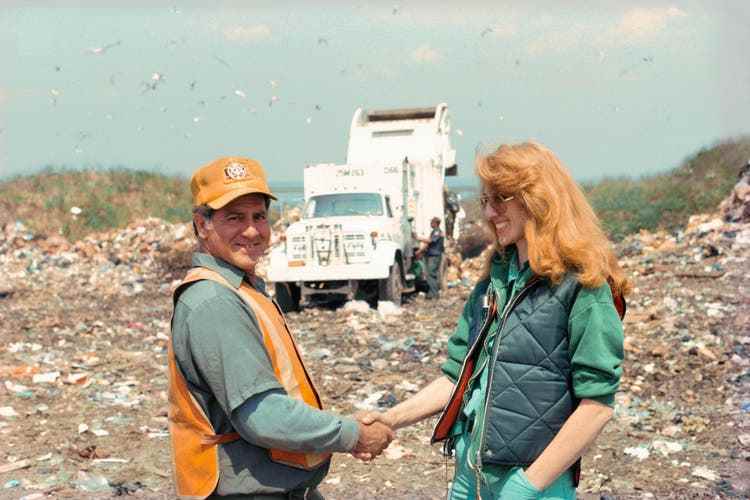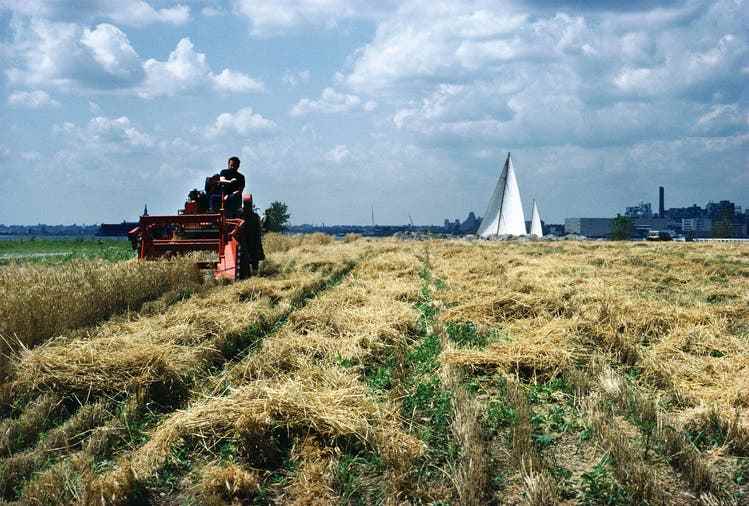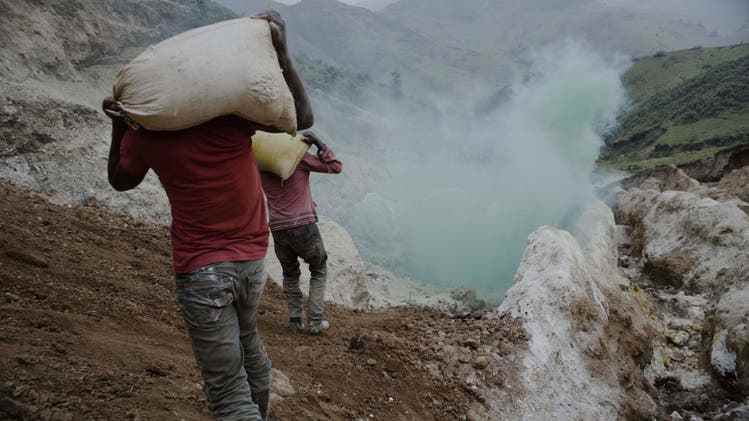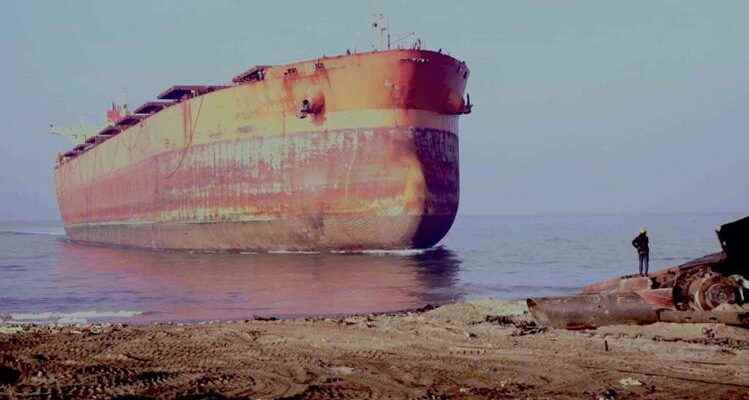“Territories of Waste” shows the productive engagement with global garbage.
Hira Nabi «All That Perishes at the Edge of Land», 2019, film still
Did you know that the Rhine has one of the highest concentrations of microplastics in any river in Europe? You don’t want to know that exactly if you like to drift in the water on a hot day. The river seems reasonably clean, and swimming is not forbidden. The stately landmark of the city of Basel is nowhere near as heavily contaminated with chemicals as it was decades ago. The filter systems in the production facilities have worked. But these infinitely fine particles, the microscopic abrasion of our civilization – it is invisible and still there.
It is not bad that the Museum Tinguely, located directly on the Rhine and towered over by the towers of the Roche Group, is dedicating itself to an exhibition on the subject of waste. The artistic positions that can be seen here span the entire world – from America to Europe, Pakistan, India to Colombia. Installation, photography, sculpture, film and performance are used. The course is densely populated and the theme branches out in many directions: waste cycles and neo-colonial exploitation, destroyed landscapes, the absurdity of abundance, the poetry of civilization relics. The complexity of the Waste alone would be enough for several exhibitions.
Waste moves artists
What drives artists from all over the world to make the waste problem the subject of their art? It’s amazing how many it moves. The global simultaneity of eco-art is a symptom of our time. With the differentiation of waste into an infinite number of sectors and “territories”, the topic has become so pressing that it almost gets into the hands of artists. In addition, the material is plentiful and available almost everywhere. It is substance, idea and message – and possibly more virulent than all other media.
Even Tinguely, the patron of the museum, estimated the availability of the scrap yards. The creative use of waste is not new in art. Daniel Spoerri and Arman used it to create modern vanitas arrangements, and Joseph Beuys offered the contaminated Rhine water as a bottle edition. Beuys was one of the first artists to not only use waste as a material, but also to make environmental pollution an explicit theme.

Mierle Laderman Ukeles, Touch Sanitation Performance, 1979 – 1980/2017 July 24, 1979 – June 26, 1980. Citywide performance with 8,500 employees of the Sanitation Department of New York City in all 59 boroughs May 15, 1980, Sweep 10, Queens District 14 Archival pigment print Migros Museum of Contemporary Art Collection © Mierle Laderman Ukeles; Photo: Vincent Russo, courtesy the artist and Ronald Feldman Gallery, New York
American performer Mierle Laderman Ukeles went even further in the early 1980s. In a large-scale thank you campaign, she drew attention to the New York garbage and landfill workers and thus to the permanent effort to cope with the city’s emissions.
Today it is no longer about eliminating the waste, which is increasing worldwide year by year. A recycling and shipping machine is working on making it usable or moving it to other countries. But even when recycled, the material usually remains problematic, and in developing countries the waste from industrialized nations causes the contamination of coasts and landscapes. A permanent movement has established itself, a flow from here to there that never stops. The unsolvability of the garbage problem is a parable for the state of our planet.
Terrible, but not hopeless
“The garbage never goes away – it just moves in circles,” said the American biologist Lynn Margulis. It does not disappear, and it is becoming more and more visible – the exhibition bears the phenomenon aptly in the title. It is precisely the accumulation of the monstrous that concerns many artists. Mountains of household and production leftovers that are turned and loosened by cranes to counteract the poison gases before the mass is incinerated. British artist Eloise Hawser shows the process in a multi-channel installation from 2019 at a waste disposal facility near London’s Heathrow Airport.

Many works have a documentary character. Art and reportage overlap and shape their own concept of the work. They are based on facts, but guide the view of the incomprehensible of the phenomenon and the destruction. And sometimes also on the belief in the time. A wall-sized work by the Colombian Carolina Caycedo uses colored drawings and writing to tell the story of the destruction of an entire region when a dam burst. The mud from the reservoir of an iron mine poisoned the river basin over a distance of 600 kilometers and with it the livelihood of the indigenous people. The tragedy could not destroy their bond with the river. For them, one day he will awake again, free from poison.
The story seems terrible and yet not hopeless. It shows the hope of a mystical power. The art here not only deals with the suppressed, but also with the urgent. For the artist it is not a possibility among others, but a necessity. If you can take something away from the exhibition, it has already fulfilled part of its mission.

Revital Cohen & Tuur Van Balen, Trapped in the Dream of the Other, 2017
Territories of Waste. About the return of the repressed. Museum Tinguely, until January 8, 2023. Catalog CHF 27.–. The catalog is also available as a free download from the museum’s website.
